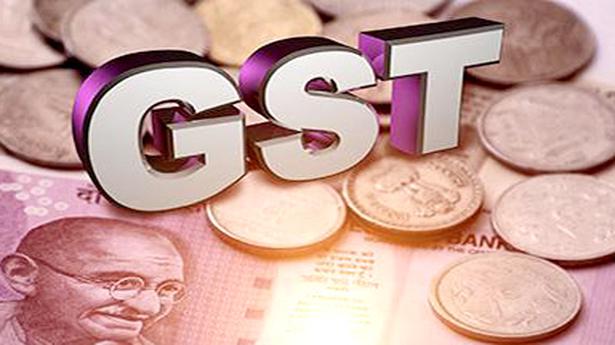
GST compensation sunset: Punjab, Goa, Chhattisgarh may face most revenue stress
The Hindu
Revenue collections from the GST regime have fallen short of expectations for both the Centre and the States, says a new working paper by the National Institute of Public Finance and Policy
With the sunset of the five-year assured compensation for States under the Goods and Services Tax (GST) regime from this month, Punjab, Goa and Chhattisgarh are likely to face the most revenue stress, as per a new working paper by the National Institute of Public Finance and Policy (NIPFP).
The paper, titled ‘Revenue Assessment of GST in India’ by NIPFP associate professor Sacchidananda Mukherjee, notes that revenue collections from the GST regime have fallen short of expectations for both the Centre and the States, but the former made up for this by raising non-shareable taxes and levying cesses on commodities such as petroleum products.
Also read: The status of GST compensation dues
“Our analysis shows that for majority of States the share of State GST collection [with GST compensation receipts] in Gross State Domestic Product [GSDP] do not show much increase during 2017-21 as compared to the share of revenue that is subsumed into the GST in GSDP during 2015-17,” Mr. Mukherjee concluded.
Comparing revenue trends prior to GST’s implementation from July 2017 with those since then, the paper found that the share of GST revenues fell for Madhya Pradesh under the new tax regime, while Punjab recorded the largest increase in the share of revenues, followed by Maharashtra. The revenue compensation assured to States to join the GST framework has helped them cope up with GST shortfalls.
Also read: GST compensation due to States now totals ₹35,266 crore
“…In absence of revenue compensation, States may face revenue shock and it will impact State finances differently for different States. States where dependence on GST compensation (as measured by the share of GST compensation in SGST collection) as well as the share of SGST in own tax revenue are higher [e.g., Goa, Punjab and Chhattisgarh], they may face relatively higher revenue stress than other States,” the paper pointed out.

The Union Budget unveiled on February 1, 2025, has come at a time of unprecedented global uncertainty and a flagging domestic economy. The real GDP growth is estimated at 6.4% for 2024-25 and between 6.3-6.8% for 2025-26, a far cry from >8 percent growth required annually to make India a developed nation by 2047. While much attention has been devoted to the demand stimulus through income tax cuts, not enough is said about the proposed reforms in urban development, tariff rationalisation, and regulatory simplification aimed at making Indian cities and corporates more competitive. Since the majority of economic activity is located in cities (urban areas account for ~55% of GDP) and produced by large corporates (~40% of the national output and 55% of India’s exports), the above-mentioned reforms have a pivotal role in improving India’s trend growth rate. Below we unpack each reform.












